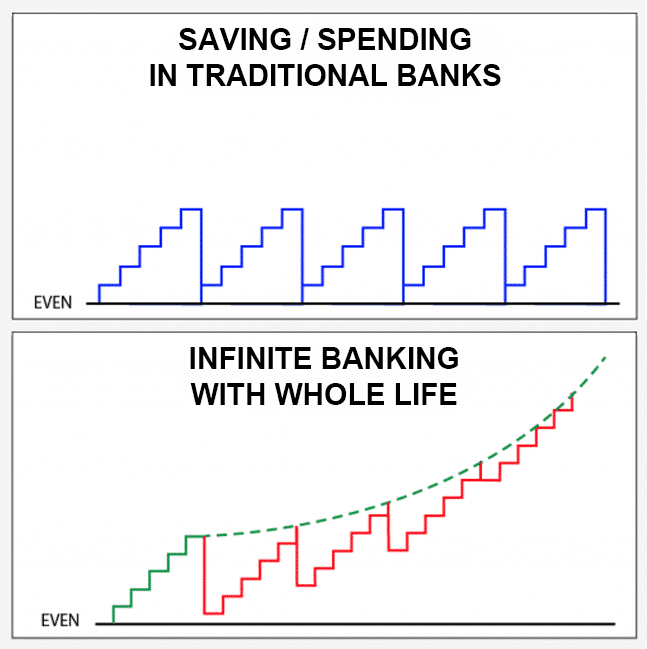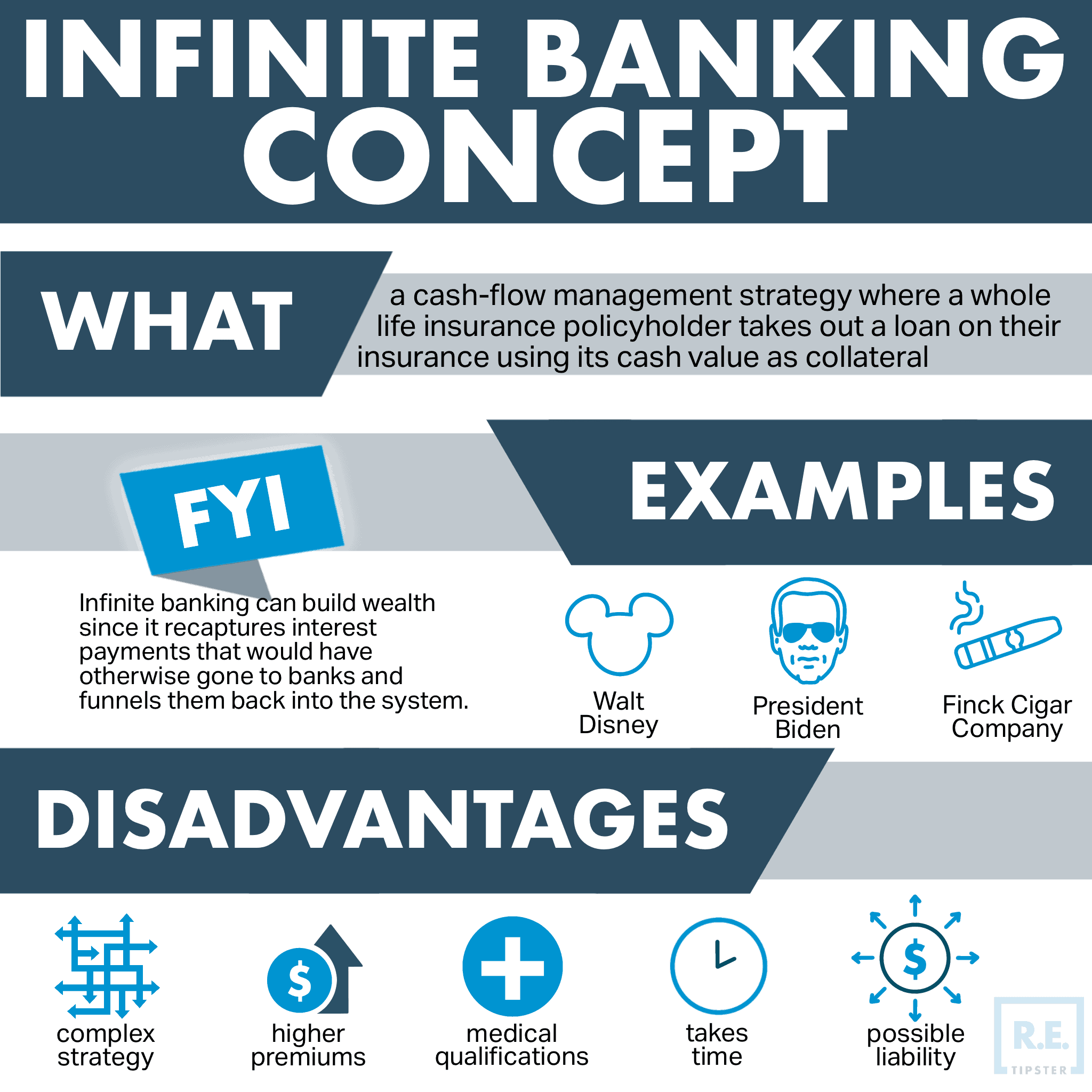All Categories
Featured
Table of Contents
Okay, to be reasonable you're actually "financial with an insurance policy company" instead than "banking on yourself", however that idea is not as easy to sell. It's a bit like the concept of getting a residence with money, then obtaining versus the home and putting the money to function in another financial investment.
Some people like to discuss the "speed of cash", which primarily indicates the exact same thing. In truth, you are simply optimizing take advantage of, which works, however, certainly, functions both ways. Truthfully, every one of these terms are frauds, as you will see listed below. That does not suggest there is nothing rewarding to this idea once you obtain past the advertising.
The entire life insurance sector is afflicted by overly pricey insurance, massive commissions, shady sales techniques, low rates of return, and badly enlightened customers and salespeople. If you want to "Bank on Yourself", you're going to have to wade right into this market and actually buy whole life insurance coverage. There is no alternative.
The guarantees intrinsic in this item are vital to its function. You can borrow against many types of cash money worth life insurance coverage, however you should not "bank" with them. As you buy an entire life insurance coverage policy to "bank" with, bear in mind that this is a totally different section of your monetary plan from the life insurance policy section.
As you will see below, your "Infinite Financial" policy really is not going to accurately give this crucial financial feature. An additional problem with the fact that IB/BOY/LEAP depends, at its core, on an entire life plan is that it can make buying a policy problematic for many of those interested in doing so.
Be Your Own Banker Nash
Dangerous pastimes such as diving, rock climbing, skydiving, or flying additionally do not mix well with life insurance policy items. The IB/BOY/LEAP supporters (salesmen?) have a workaround for youbuy the policy on a person else! That might work out fine, because the factor of the plan is not the death advantage, but bear in mind that acquiring a plan on small youngsters is more costly than it needs to be given that they are usually underwritten at a "typical" rate instead of a favored one.

Most policies are structured to do a couple of things. A lot of typically, policies are structured to maximize the commission to the agent marketing it. Cynical? Yes. It's the truth. The compensation on a whole life insurance policy policy is 50-110% of the very first year's premium. Sometimes policies are structured to make the most of the survivor benefit for the costs paid.
With an IB/BOY/LEAP plan, your objective is not to maximize the death benefit per buck in costs paid. Your goal is to make best use of the cash money value per buck in premium paid. The rate of return on the policy is extremely essential. One of the very best methods to make best use of that variable is to get as much cash money as feasible right into the plan.
The finest method to enhance the rate of return of a plan is to have a relatively small "base plan", and after that put even more money into it with "paid-up additions". Rather than asking "How little can I place in to obtain a particular survivor benefit?" the inquiry comes to be "Just how much can I legally put right into the policy?" With even more money in the policy, there is more cash money value left after the costs of the death advantage are paid.
A fringe benefit of a paid-up enhancement over a normal costs is that the commission rate is lower (like 3-4% as opposed to 50-110%) on paid-up additions than the base plan. The less you pay in payment, the greater your price of return. The rate of return on your cash money value is still mosting likely to be negative for a while, like all money worth insurance coverage.
A lot of insurance policy firms just supply "straight recognition" car loans. With a straight recognition loan, if you obtain out $50K, the dividend rate applied to the money value each year only applies to the $150K left in the policy.
Standard Chartered Priority Banking Visa Infinite
With a non-direct acknowledgment car loan, the firm still pays the same returns, whether you have "obtained the money out" (technically versus) the policy or not. Crazy? That knows?
The business do not have a source of magic complimentary cash, so what they give in one place in the policy have to be drawn from an additional area. If it is taken from a feature you care less about and put into a function you care much more about, that is a great point for you.
There is another important feature, generally called "clean fundings". While it is excellent to still have actually dividends paid on cash you have actually secured of the plan, you still have to pay passion on that lending. If the dividend price is 4% and the lending is billing 8%, you're not specifically appearing ahead.
With a clean lending, your lending rates of interest coincides as the returns price on the plan. While you are paying 5% passion on the car loan, that rate of interest is entirely countered by the 5% returns on the funding. So in that respect, it acts much like you withdrew the cash from a financial institution account.

5%-5% = 0%-0%. Without all 3 of these factors, this plan simply is not going to function extremely well for IB/BOY/LEAP. Virtually all of them stand to profit from you buying into this principle.
In truth, there are several insurance representatives chatting regarding IB/BOY/LEAP as an attribute of entire life who are not actually selling plans with the required attributes to do it! The trouble is that those who know the idea best have a substantial conflict of passion and generally inflate the benefits of the principle (and the underlying policy).
Bank Concept
You must contrast loaning against your policy to taking out cash from your cost savings account. No money in money value life insurance coverage. You can put the cash in the financial institution, you can spend it, or you can get an IB/BOY/LEAP plan.
You pay taxes on the passion each year. You can save some even more cash and put it back in the financial account to begin to gain passion once more.
When it comes time to buy the boat, you sell the investment and pay taxes on your long term funding gains. You can conserve some even more money and get some more investments.
The money worth not made use of to spend for insurance and payments expands throughout the years at the dividend rate without tax drag. It starts out with adverse returns, yet hopefully by year 5 approximately has actually recovered cost and is expanding at the returns price. When you go to get the watercraft, you borrow versus the policy tax-free.
What Is A Cash Flow Banking System
As you pay it back, the cash you paid back starts expanding again at the dividend price. Those all work rather likewise and you can compare the after-tax prices of return. The 4th option, however, works extremely differently. You do not conserve any type of money nor get any kind of type of financial investment for several years.
They run your credit scores and give you a finance. You pay rate of interest on the borrowed money to the bank until the car loan is repaid. When it is settled, you have a nearly worthless watercraft and no cash. As you can see, that is not anything like the first three options.
Latest Posts
Infinite Banking Concept Pdf
Banking Life
How To Become Your Own Bank Explained‼️ - How To ...